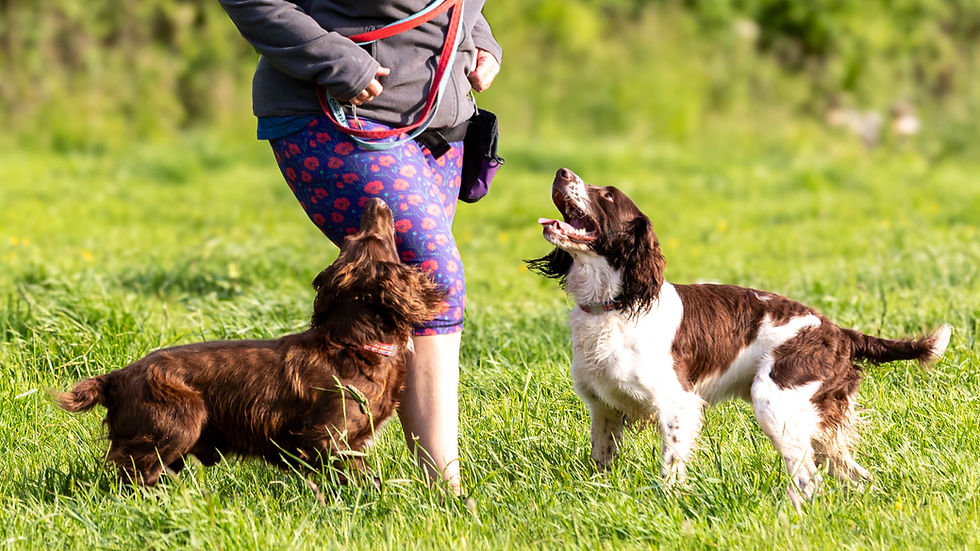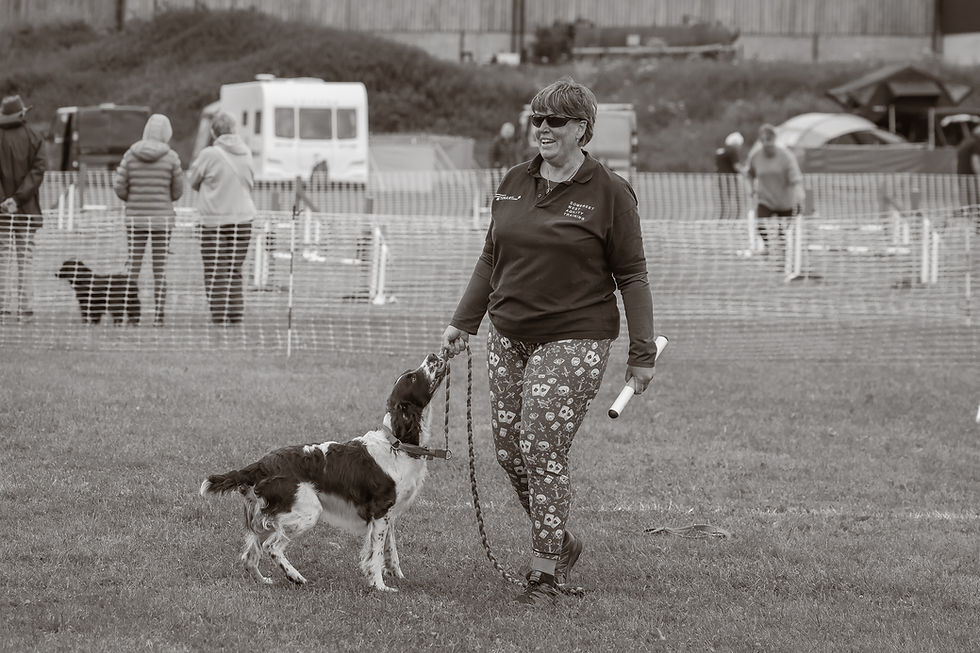3 Types of Play, and Why You Should Use Them In Your Training
- Sara Seymour

- May 26, 2021
- 3 min read
Updated: Jan 3, 2025
Play is a really important part of any training you do with your dog. Studies have shown that including play in our training sessions with our dogs can help to improve their memory. Besides, it’s fun!
There are three main categories of play: food play, toy play and personal play. Play is a complex topic which could warrant a book of its own, so for now I’ll cover a small amount of detail of each below. In essence though, I would highly recommend that you end your sessions with a little bit of play – whichever type works best for you and your dog in that moment. This will really help to condition a positive emotional response in your dog to your training sessions.
Food play – It’s OK to play with your food! There are lots of games you can play with treats that are far more interesting than just giving it to your dog. Options include tossing individual treats for them to chase, throwing treats for your dog to catch (or not catch as is so often the case), sprinkling a number of treats around on the floor or moving the treat around in your hand for your dog to chase. I regularly end sessions with a scatter (I call it ‘sprinkles’) as this brings Ripley’s energy down and enables him to transition to settling more easily after a session. However, this will often be after I’ve thrown treats for him to chase or tossed a few for him to catch. Or drop. We have good days and bad days with that one! With scentwork and sniffing being so rewarding for Ripley, I regularly make the rewarding afterwards last at least as long as the time he was searching.

Toy play – there are a few options with toys. Some dogs enjoy playing tug, others like to chase a ball and there are those that just want to catch and hold a ball. Vinnie would have sold his soul for a tennis ball, and mostly he just liked to parade around with it. Once in a while he would throw it at someone’s feet and try to persuade them to throw it. Ripley enjoys tug, but not all the time. I often offer a toy at the end of a training session to give him the option. He does also like to parade around with the toy, ‘killing’ it as he does. As a rehab professional, the only word of caution that I would give is against repetitive throwing. One or two throws is fine, but not half an hour of back and forth.

Personal play – this is very personal to each dog. Some dogs would rather not be touched, and that should always be respected. There are those that enjoy some calm stroking, chin scratches and belly rubs. Then there’s dogs like Ripley that like a bit of rough and tumble play fighting. You can work out what your dog enjoys most by either watching them with other dogs or trying a few things out. I’d also suggest checking out Dr Amy Cook and the Play Way to discover even more about personal play.
Each of the different types of play can be combined, so that you do a little bit of each, or you can just pick one that you prefer. What you choose may also depend on the environment that you’re training in and what you’re trying to achieve. If I’ve trained something that requires a lot of self control and thought on the dog’s part, then I’m likely to end with some more energetic play to allow them to release some of the energy that they’ve been holding back. If we’ve been working on something high energy, then I’ll use some calm personal play or food scatters to bring that energy down. I’m always looking for some sort of balance.
Try a few things out with your dog and see what they enjoy. Take your play on walks; it will help to build engagement and strengthen your relationship with your dog.
This is an extract from my book, Scentwork: Step By Step.


